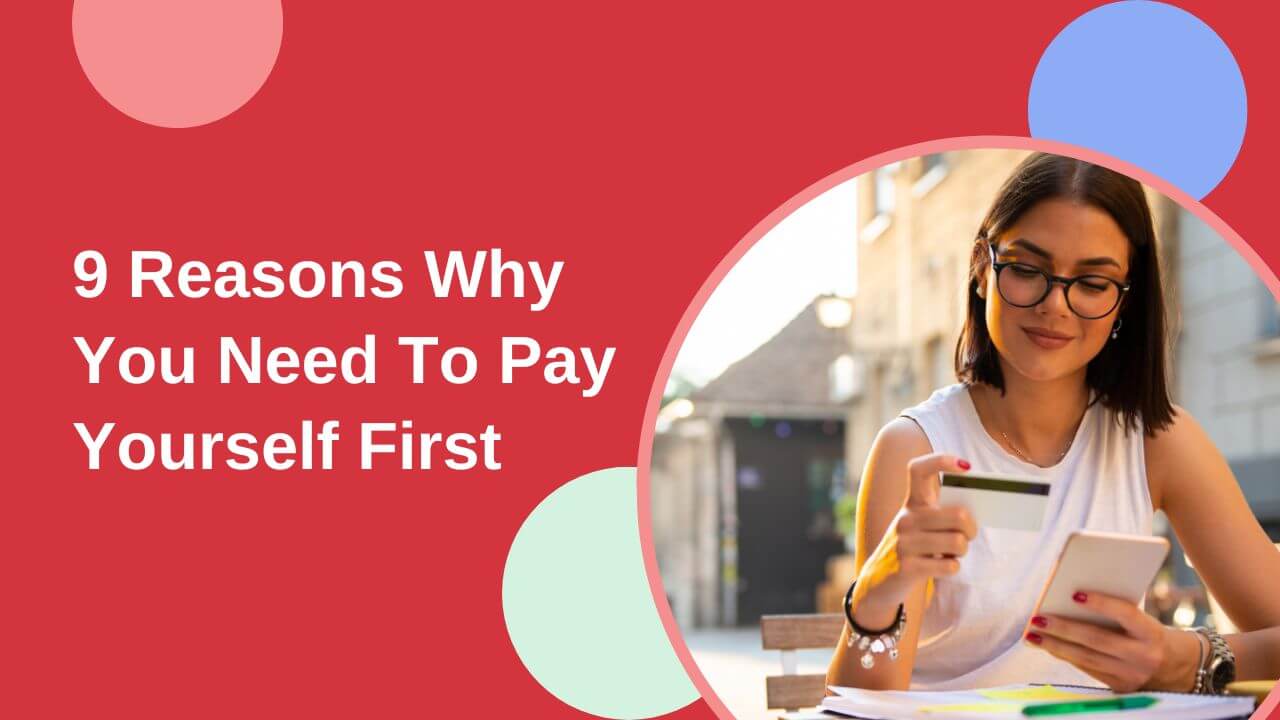There is a popular method to automatically route a specified contribution from each paycheck at the time it is paid to a savings or investment account. Because the savings contributions are automatically routed from each paycheck to your savings or investment account, you are “paying yourself first.” In other words, paying yourself before you begin paying your monthly living expenses and making discretionary purchases.
What Does Pay Yourself First Mean?
Pay yourself first is a technique for generating long-term savings by putting aside a portion of your monthly income before you do anything else with the money, such as paying your mortgage or rent, buying food, or acquiring the latest fashionable clothing.
The logic behind paying yourself first is that if you wait to save what is left over after all your monthly bills are paid, there will be nothing left over to save. However, by contributing to your savings or investment account before you pay any of your other bills, you are more likely to reach your long-term savings goals.
How To Pay Yourself First
The easiest thing to do is to open a savings account or investment account. This gives you a convenient way to make transfers or deposits as soon as you get paid. Be sure to make your Pay Yourself First deposit an automatic transfer, either for each payday or once a month. The other option is to open an account at an online-only bank. The online-only banks generally offer higher interest rates than brick-and-mortar banks.
If you’re interested in learning more about savings account, check out our article – What Is A Savings Account And How Does It Work?
If you have access to an employer-sponsored retirement plan, such as a 401(k), you can contribute to that instead of a savings account. Your money will accumulate tax-free, and many employers will match your contribution, so you’ll typically get a matching contribution on 3%-6% of your salary. If you don’t have the employer option, you can set up your own individual retirement account (IRA).
It’s All About Psychology
Saving money is a strong incentive and seeing your balance grow may provide mental benefits. You’re telling yourself that your future is more essential to you when you make savings a priority. Also, because it provides you greater capacity to deal with adversity, the cash might give you peace of mind.
Fortunately, when you establish a routine, you are more likely to follow it. There’s less of a chance that you’ll deviate if you start saving every pay period and automate the deposits.
The hardest thing about saving is getting started. But once you make it a habit, it will become second nature. Paying yourself first is one of the smartest things you can do for your future. So, start today and watch your nest egg grow.
If you want to learn more about having an abundance mindset, check out our article – 15 Ways To Shift From A Scarcity Mindset To An Abundance Mindset.
Deal With Your Debt
Remember not to neglect your debt. If you’re swimming in credit card and personal loan debt, be practical and get your debt under control. You may even find that it is best to focus on paying off your debt completely before you commit to a Pay Yourself First plan. Compare the amount of monthly interest you’ll be earning on your savings or investment accounts with how much you’ll be paying in interest monthly on your debt. If the latter exceeds the former, you should pay off the debt first. You don’t want your debt to cost you more money than you save.
Paying off high-interest debt should always be a priority because it’s like leaving money on the table. The sooner you get rid of it, the better. After you’ve paid off your debt, you can focus on building up your savings and investment accounts.
If you’re interested in learning more about what debt is, check out our article – How Debt Works.
9 Reasons To Pay Yourself First
1. It Automates Your Savings
When you make savings automatic, you’re less likely to spend the money on other things. This is especially helpful if you have trouble saving. Once you set up an automatic payment from your paycheck to your savings account, you don’t have to think about it. The money will be transferred before you even see it in your checking account.
2. It Helps You Stay Disciplined
It can be difficult to stick to a savings plan when you have other expenses that seem more pressing. But if you make saving a priority, it will become easier over time. Once you pay yourself first, you’ll force yourself to find the money for other expenses from your remaining income.
3. It Builds Your Savings Quickly
The more you save, the faster your balance will grow. If you have a 401(k) or another employer-sponsored retirement plan, make sure you’re contributing at least enough to get the employer match. Otherwise, you’re leaving money on the table. If you can afford to, try to save 10% to 15% of your income.
4. It Reduces Your Stress
Money troubles are one of the leading causes of stress. If you’re always worried about bills and don’t have any savings to fall back on, it can be tough to relax. But if you have a solid savings plan in place, you’ll feel more confident and less stressed.
5. It Helps You Reach Your Goals
When you have specific goals in mind, it’s easier to stay motivated. If you know you want to buy a house or have financial freedom by a certain age, saving becomes much more important. Paying yourself first will help you reach your goals sooner.
6. It Gives You A Safety Net
A savings account is like a safety net. If you ever lose your job or have an unexpected expense, you’ll have money to fall back on. This can give you peace of mind and make it easier to weather tough times.
7. It Uses The Power Of Dollar Cost Averaging
When you invest regularly, you’ll benefit from dollar cost averaging. This is the process of buying more shares when prices are low and fewer shares when prices are high. Over time, this averaging out can help you earn a higher return.
8. It Sets Proper Priorities
If you pay yourself first, you’ll quickly learn to set priorities. When you have a limited budget, you have to decide what’s most important. This can help you avoid impulse purchases and learn to live within your means.
9. It’s Easy To Get Started
One of the best things about paying yourself first is that it’s easy to get started. You don’t need any special equipment or knowledge. Just set up an automatic payment from your paycheck to your savings account and you’re good to go.
Paying yourself first is a simple concept that can have a significant impact on your financial future. If you’re not already doing it, start today. You’ll be glad you did.
How Much Should You Pay Yourself First?
Regular savings contributions can go a long way toward building a long-term nest egg, and some financial professionals call the Pay Yourself First Plan the golden rule of personal finance.
You can start your Pay Yourself Plan by taking as little as $50 to $100 each payday and putting it into an investment vehicle, such as a savings or investment account. Set aside the amount you’ve committed to saving before doing anything with the rest of your money, including buying groceries.
If you get paid every two weeks, that’s 26 paychecks per year. If you set aside $100 each payday, you’ll have saved $2,600 by the end of the year. And if you can increase your savings to $200 per paycheck, you’ll have saved twice as much, or $5,200. If you invest the $200 a month for twenty years in an S&P 500 Index fund you will have $196,609 if you earn the historical return rate. The S&P 500’s annualized average return has been 11.88% since its 1957 inception through the end of 2021.
If you want to learn more about investing, check out our article – Index Funds: Why They’re Important And What You Need To Know.
A fantastic way to make an increase in the monthly amount is to wait until you earn a raise and allocate all of the after-tax increase in your paycheck to funding your Pay Yourself First Plan.
A good rule of thumb for knowing how much to save is based on the 50/30/20 Rule. Using this methodology, you would break down your post-tax earnings as follows:
- 50% goes to necessities like housing costs, food, and transportation
- 30% is for discretionary spending on things like entertainment and dining out
- 20% goes toward savings or paying off debt
If you’re not used to saving regularly, it may be difficult to commit to setting aside 20% of your income. If that’s the case, start with 10% and increase the percentage as you get more comfortable with the idea of saving.
Of course, the more you can save, the better off you’ll be in the long run. But even small amounts can add up over time and help to ensure a bright future.
The key is to make sure that you pay yourself first regularly, and preferably every payday. Then, once you have the money in your savings or investment account, let it grow. One way to do this is to invest in an index fund giving you the opportunity to earn a higher return on your investment than if you simply use a savings account.







